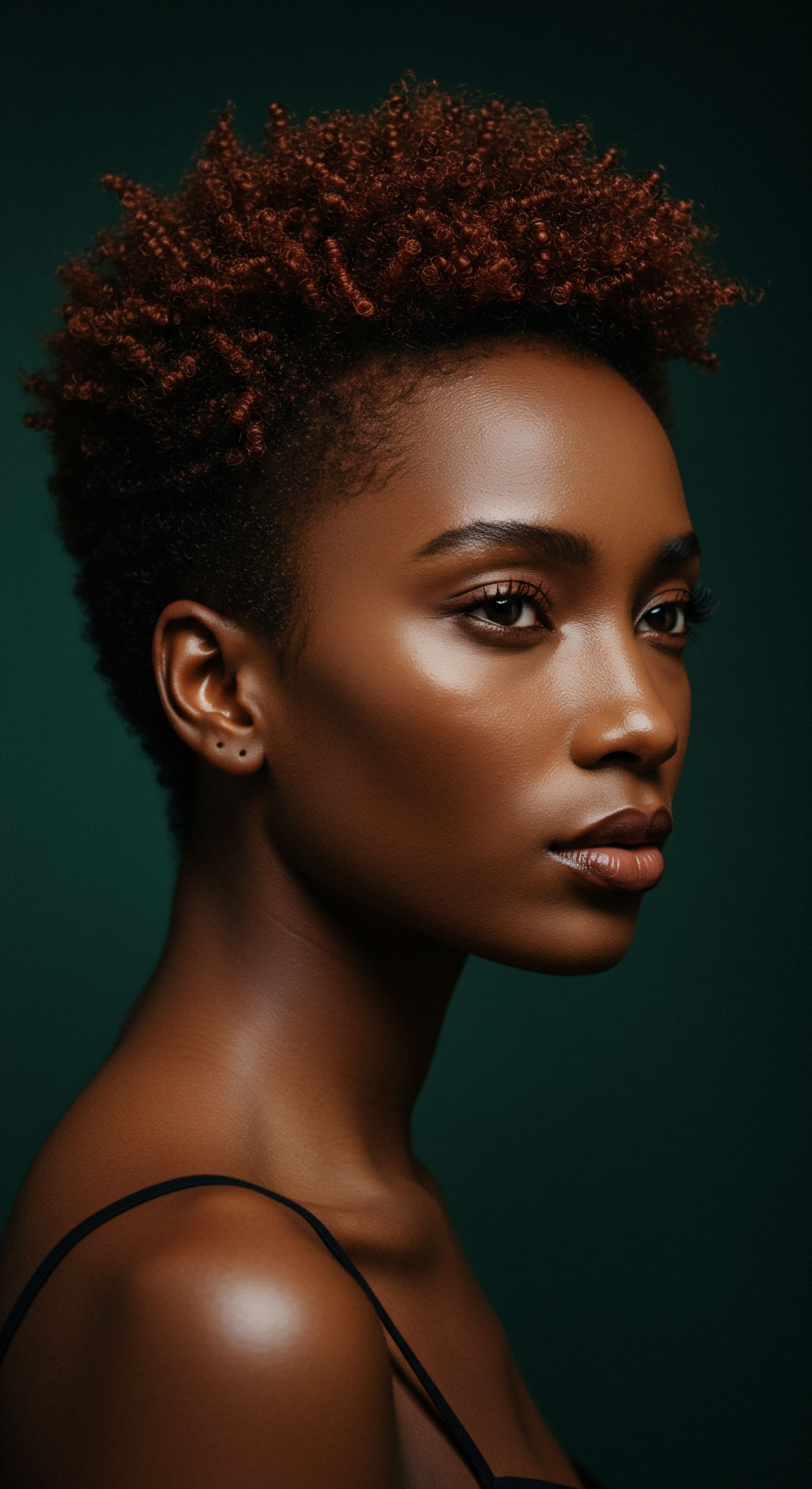
Roots
Consider for a moment the silent language our hair speaks. It whispers tales of lineage, of ancient soils, of the sun on distant lands, and of the hands that once cared for it. Each coil, each curl, each strand carries a weight of history, a memory that stretches far beyond our individual experiences.
This intimate connection, often overlooked in the hurried pace of contemporary life, remains a powerful, grounding force, linking us to collective pasts and shaping who we are today. It is a profound, deeply personal connection to heritage, subtly yet persistently guiding our sense of self.

What Deep Foundations Do Hair Practices Hold?
Across diverse civilizations, hair has consistently served as a powerful symbol, conveying messages about status, age, marital state, spiritual beliefs, and even one’s role within a community. From ancient African societies where intricate styles communicated tribal identity and social standing to various cultures across the globe, the manipulation of hair was never a mere aesthetic choice. It was a language, a form of visual communication, a repository of collective memory. Anthropological studies consistently affirm hair’s central position in identity formation, often linked to significant rites of passage, such as initiation ceremonies or marriages.
In many ancient African cultures, for instance, specific braiding patterns or hair arrangements could indicate a person’s age group, marital status, wealth, or even their religious affiliation. These were not casual styles; they were deliberate expressions of belonging and individual standing. The very act of styling hair became a communal practice, often involving family members and carrying with it the passing down of traditions, stories, and wisdom.
This communal aspect fortified bonds and preserved cultural practices across generations. The hair, therefore, became a living archive, a record of a people’s journey and their shared values.
Hair’s historical significance extends beyond adornment, acting as a profound cultural marker of identity and belonging.
The history of hair is also inextricably bound to moments of both reverence and oppression. During the transatlantic slave trade, a cruel act of dehumanization involved forcibly shaving the heads of enslaved Africans, stripping them of a vital aspect of their cultural identity and human dignity. This act aimed to sever their ties to ancestry and community, to erase the visual markers of their heritage.
Yet, even in the face of such profound brutality, resistance found a way. Enslaved people would sometimes braid patterns into their hair that reportedly served as maps for escape routes, or concealed seeds and grains for survival, transforming a symbol of subjugation into a quiet, defiant act of survival and communication.
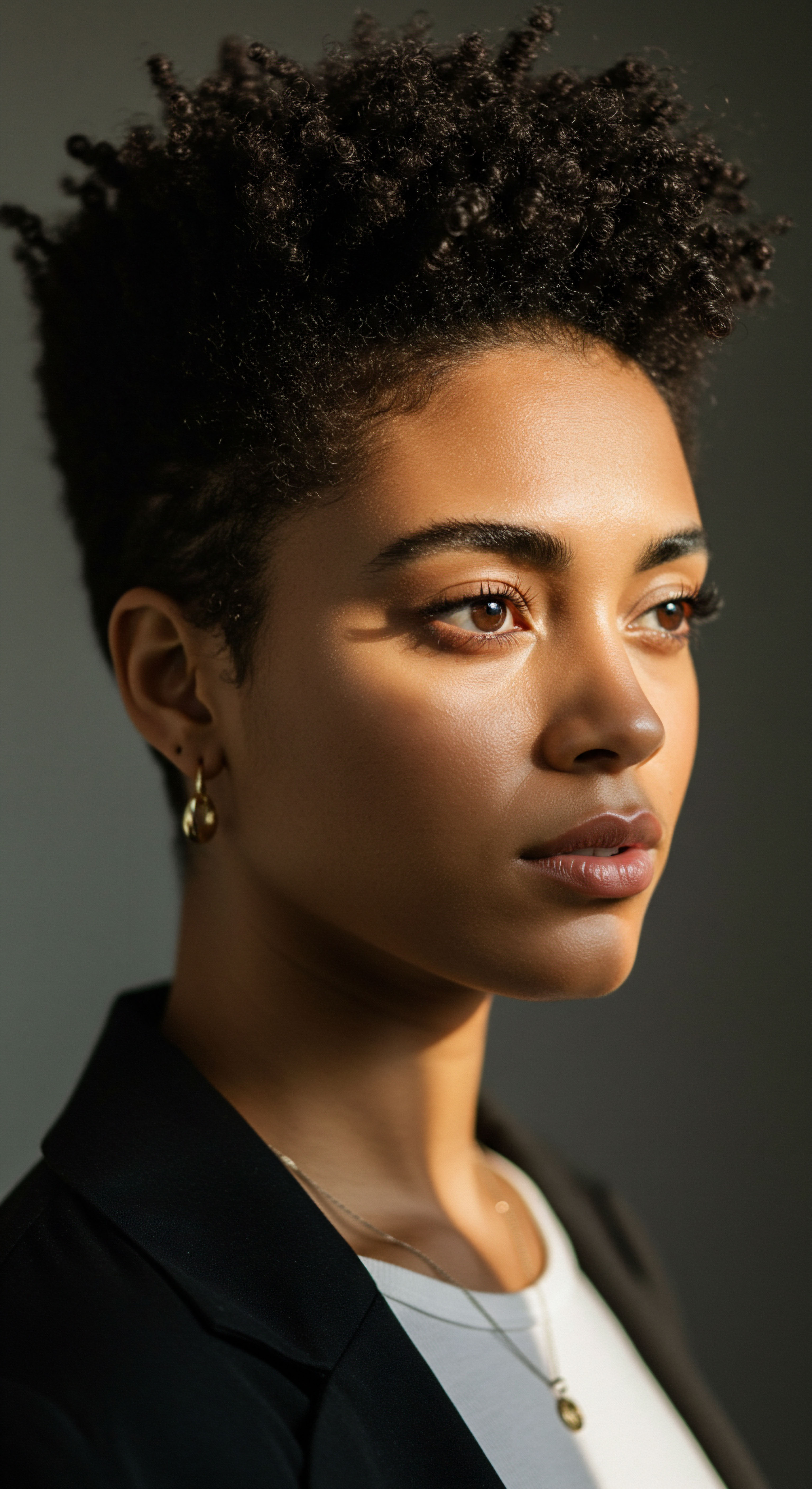
How Do Ancient Hair Rituals Persist in Modern Identity?
The echoes of these historical practices resound in contemporary expressions of identity, particularly within Black and mixed-race communities. The deliberate choice to wear natural hair today—afros, locs, braids, twists—is a powerful affirmation of self, a reclamation of heritage, and a stand against long-held societal pressures to conform to Eurocentric beauty standards. This contemporary natural hair movement, while seemingly modern, stands on the shoulders of generations who resisted attempts to diminish their inherent beauty. It is a conscious decision to honor ancestral forms and celebrate the authentic texture that connects individuals to a deep and enduring legacy.
Consider the significance of the “afro” in the 1960s and 70s Black Power movement. This style was not merely a fashion trend; it was a potent political statement, a symbol of pride and resistance against racial discrimination. It signaled a rejection of imposed beauty ideals and a bold assertion of Black identity and self-acceptance. Similarly, the growing popularity of locs today, while having ancient roots, has also become a symbol of collective identity and cultural resistance, particularly within the Rastafarian movement, extending its reach globally among people of African descent.
These historical precedents illustrate that hair, far from being a superficial concern, operates as a profound repository of cultural memory and a dynamic medium for identity expression. The decisions individuals make about their hair today are often deeply informed by these historical narratives, whether consciously or unconsciously, continuing a dialogue between past and present.
| Historical Period or Culture Ancient African Societies |
| Key Hair Practice Intricate braiding patterns, specific arrangements |
| Cultural Meaning or Identity Marker Tribal identity, social status, age, marital state, religious affiliation, wealth |
| Historical Period or Culture Transatlantic Slave Trade |
| Key Hair Practice Forced shaving, secret braided patterns |
| Cultural Meaning or Identity Marker Dehumanization (forced shaving); Resistance, escape maps, survival (secret braids) |
| Historical Period or Culture 1960s-70s Black Power Movement |
| Key Hair Practice The Afro |
| Cultural Meaning or Identity Marker Black pride, political statement, resistance to Eurocentric standards |
| Historical Period or Culture Contemporary Natural Hair Movement |
| Key Hair Practice Embracing natural textures (locs, braids, twists) |
| Cultural Meaning or Identity Marker Self-love, cultural reclamation, defiance of beauty norms, ancestral connection |

Ritual
The daily or periodic care of our hair often feels like a private act, a moment of quiet reflection or focused attention. Yet, within these seemingly simple practices lies a profound echo of shared human experience. From the careful detangling of curls to the application of nourishing balms, these rituals extend beyond mere maintenance; they become acts of intention, moments of connection to ourselves and, perhaps surprisingly, to a vast lineage of practices that have shaped identities across centuries. This section steps into that space of practical wisdom, exploring how these applied methods, passed down through time, continue to shape our personal and collective identities.
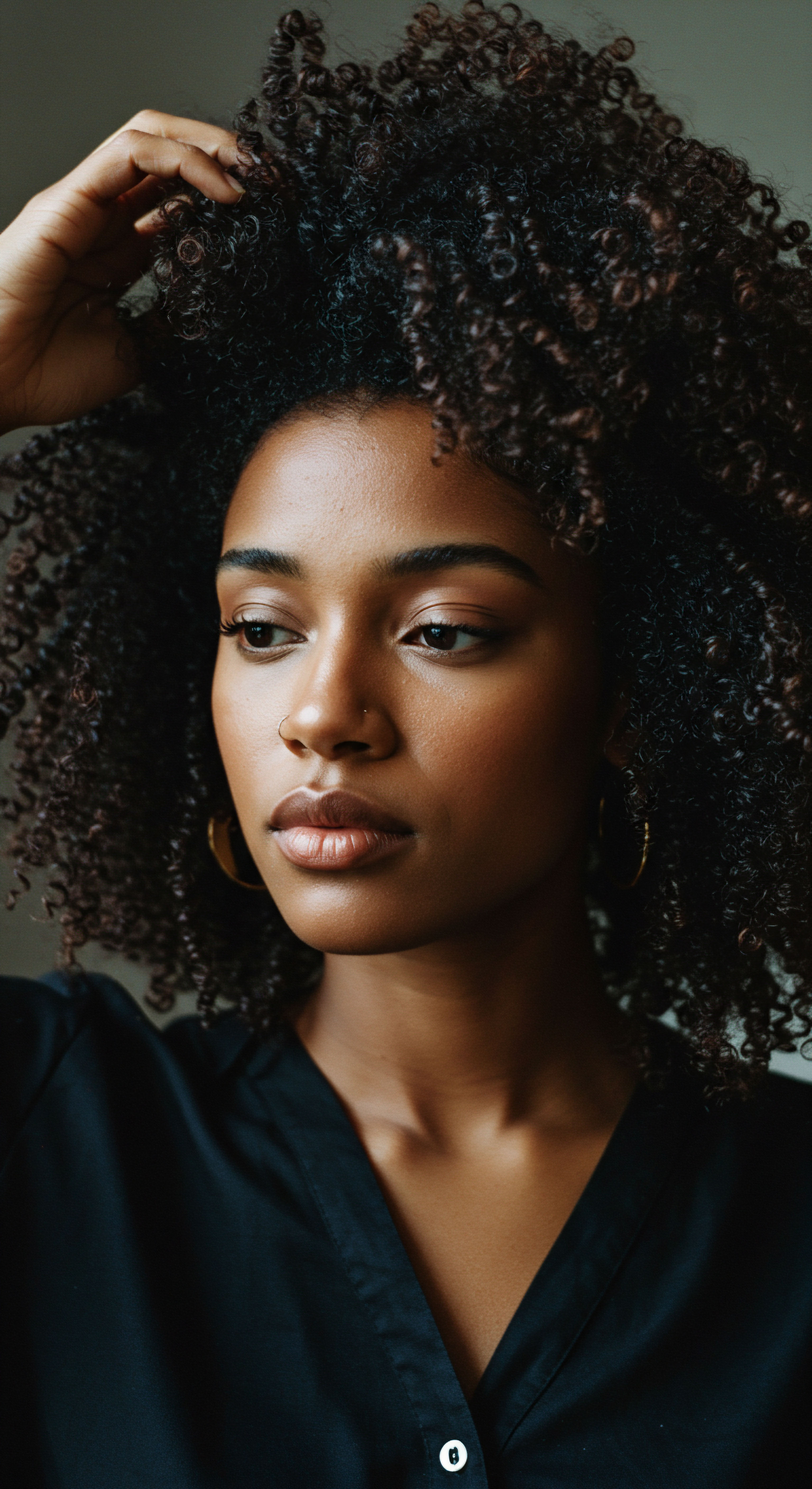
How Do Styling Practices Become Identity Rituals?
The deliberate acts of washing, conditioning, styling, and protecting textured hair are not simply about appearance; they are deeply personal rituals that connect individuals to a legacy of self-care and cultural affirmation. For many with textured hair, these practices represent a conscious departure from historical pressures to conform to altered hair aesthetics. They signify a choice to honor the hair’s inherent structure and to celebrate its unique qualities. The time spent on hair care can become a meditative practice, a moment of quiet dedication to one’s well-being and a recognition of the hair as a living part of the self.
Consider the meticulous process of sectioning hair for braids or twists, or the gentle coiling of locs. These are techniques that demand patience, skill, and often, a deep understanding of the hair’s natural inclinations. They are skills often learned from mothers, aunts, or community elders, carrying with them not only the method but also the stories and traditions of those who taught them.
This intergenerational transfer of knowledge transforms a practical skill into a cultural ritual, strengthening familial and community bonds. The act of styling becomes a form of storytelling, where each pattern or shape holds a history.
Daily hair care transforms into a purposeful ritual, affirming self and connecting to a rich cultural heritage.
The choices of styling tools and products also play a part in this ritual. Traditional combs, natural oils, and specific accessories often hold symbolic value, linking contemporary practices to ancient wisdom. The use of natural oils, for example, mirrors ancient Egyptian and Indian practices, where plant-based extracts were used for grooming and held significant cultural meaning. This continuity in ingredients and methods, even with modern scientific understanding, reinforces a connection to ancestral ways of nurturing hair.
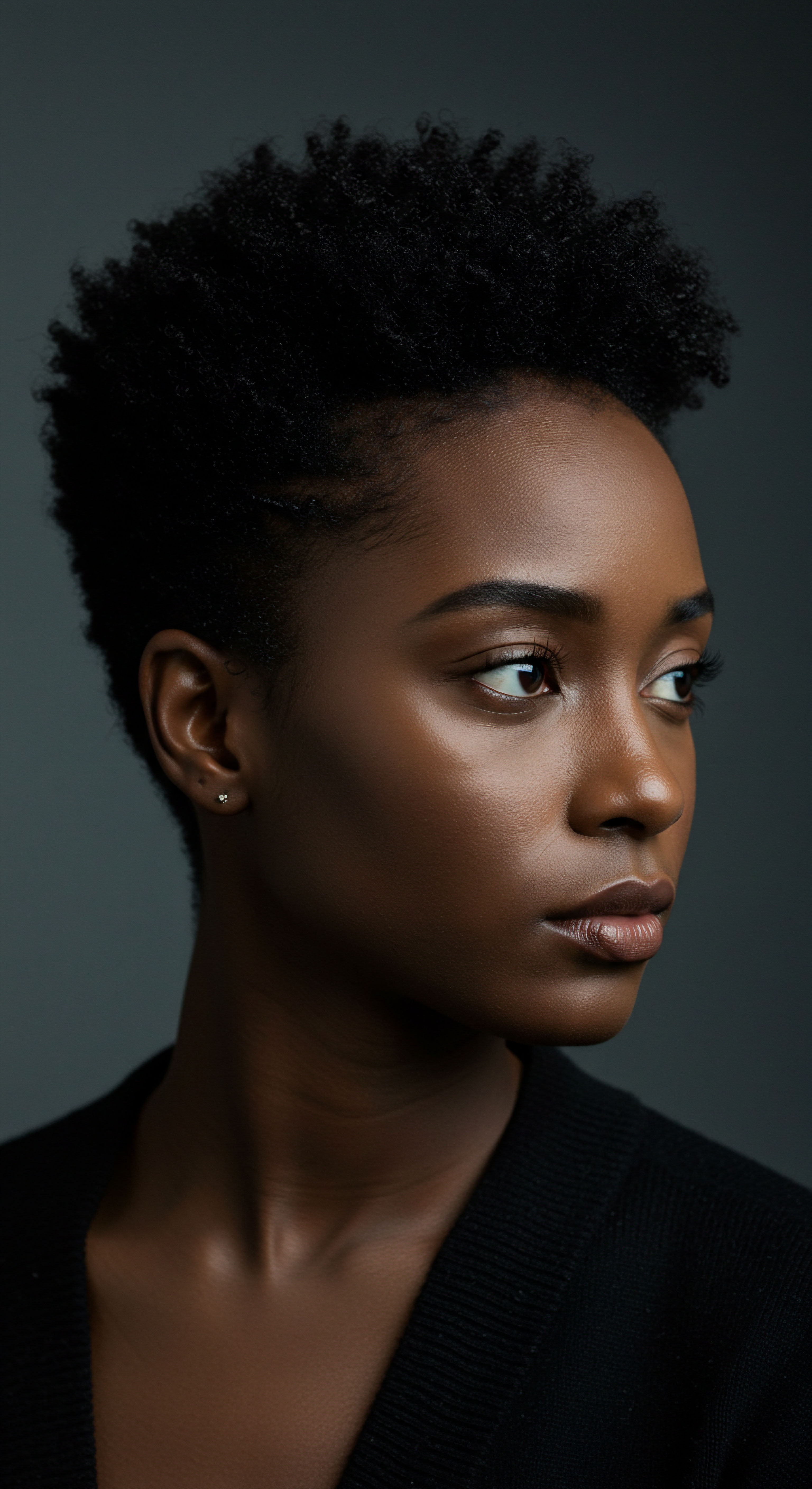
Do Hair Choices Reflect Personal and Collective Wellness?
The connection between hair and psychological well-being is significant. Research highlights how hair grooming practices directly influence self-esteem, with well-maintained hair often associated with higher confidence levels. For individuals with textured hair, this relationship is particularly salient, as their hair choices can be a public declaration of self-acceptance and a stand against external pressures. The journey of embracing natural hair can be a profoundly transformative experience, involving both personal and political motivations.
However, this personal choice is not without its challenges. The unfortunate reality of hair discrimination persists, affecting self-perception and opportunities. A study co-commissioned by Dove and LinkedIn in 2023, the CROWN Workplace Research Study, revealed a striking statistic ❉ Black women’s hairstyles were 2.5 Times More Likely to Be Deemed Unprofessional by interviewers and colleagues, even in contemporary professional settings.
This pervasive bias extends to tangible consequences; the study also found that over 20% of Black women aged 25-34 have been sent home from their jobs due to their hair. This data point illuminates a deep-seated societal issue, where historical prejudices against natural hair textures continue to manifest in modern professional environments, creating a unique stressor for Black women.
The pressure to conform to Eurocentric beauty standards has led many to chemically straighten their hair, a practice with its own serious health implications. Recent studies have linked the use of chemical hair straighteners to an increased risk of uterine cancer. This stark reality underscores the profound societal cost of hair discrimination, where individuals are compelled to make choices that can compromise their health for professional acceptance.
- Self-Acceptance ❉ Choosing natural hair often symbolizes a journey of self-love and embracing one’s authentic self.
- Mental Well-Being ❉ The emotional impact of hair discrimination can include internalized racism, anxiety, and chronic stress, underscoring the psychological weight of hair choices.
- Community Support ❉ Many individuals find strength and affirmation within communities that celebrate textured hair, offering a collective space for shared experiences and resilience.
These contemporary struggles and triumphs demonstrate that the rituals of hair care are not isolated acts. They are deeply interconnected with broader societal narratives, reflecting ongoing dialogues about beauty, belonging, and the enduring power of cultural identity in shaping individual and collective wellness.
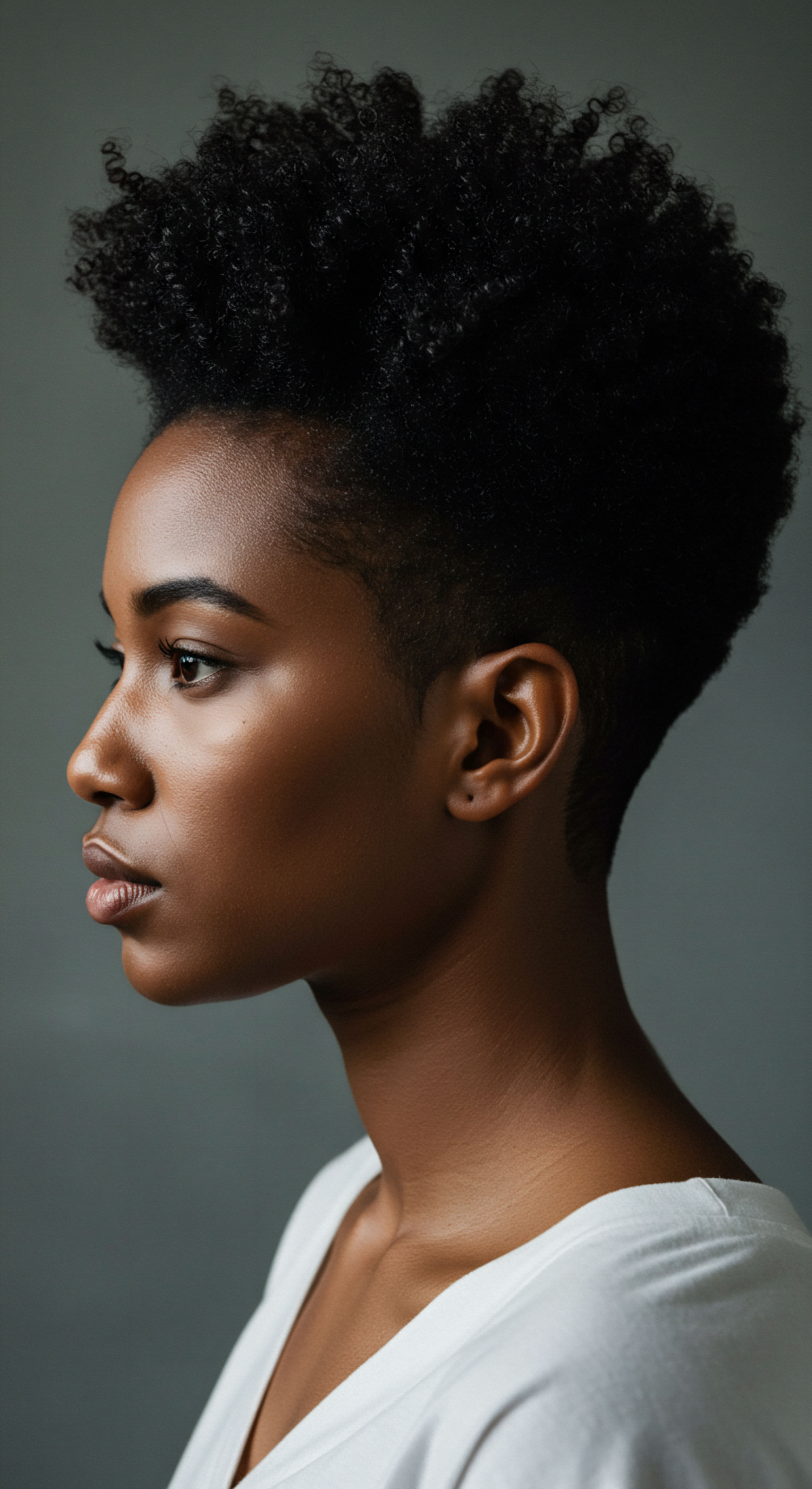
Relay
As we consider the intimate rituals of hair care, a deeper inquiry surfaces ❉ how do these personal practices, steeped in history, continue to reshape and redefine cultural identity in an ever-evolving world? This section steps into a space where science, culture, and intricate details converge, exploring the profound interplay of biological, psychological, social, and cultural factors that inform our relationship with hair. We move beyond surface-level discussions to examine the complex, interconnected ways historical hair practices continue to influence modern identity, drawing on relevant research and scholarship.

What Societal Structures Perpetuate Hair Bias?
The enduring impact of historical prejudices on modern hair practices is a testament to the power of societal structures. The concept of “good hair” versus “bad hair,” deeply rooted in the era of slavery and colonialism, where Eurocentric aesthetics were imposed as superior, continues to cast a long shadow. This historical conditioning led to the widespread adoption of chemical straightening and other methods designed to alter natural textured hair to align with dominant beauty standards. Even today, despite significant strides in cultural acceptance, these ingrained biases persist in subtle and overt ways within institutions like workplaces and educational settings.
The psychological toll of this historical legacy is substantial. Individuals with textured hair often experience microaggressions and direct discrimination, leading to feelings of inadequacy, anxiety, and chronic stress. Research from TRIYBE, for instance, highlights the mental health consequences of hair-based stigma, including internalized racism and negative self-image. This stress can be particularly acute in professional environments where unwritten rules or explicit policies may penalize natural hairstyles.
Societal structures, born from historical biases, continue to influence perceptions of hair, affecting well-being and opportunity.
The economic implications of this bias are also stark. Black consumers, for example, spend billions annually on hair care, often investing in products and services to manage or alter their hair in ways they perceive will lead to greater acceptance. The financial burden of conforming to Eurocentric beauty standards, which can include expensive and potentially harmful chemical treatments, adds another layer of inequity.

How Does Hair Express Resistance and Resilience?
Despite these pervasive challenges, hair remains a powerful medium for resistance and the assertion of identity. The contemporary natural hair movement is a vibrant expression of cultural pride and a deliberate act of defiance against historical subjugation. It represents a collective reclaiming of beauty standards and a celebration of ancestral heritage. This movement is not merely about personal preference; it is a socio-political statement that challenges the status quo and pushes for broader acceptance and appreciation of diverse hair textures.
The CROWN Act (Creating a Respectful and Open World for Natural Hair), enacted in several U.S. states, stands as a legislative effort to combat hair discrimination in workplaces and schools. This legislation recognizes the deep cultural and historical significance of hair and seeks to protect individuals from bias based on their hair texture or protective styles. Its existence highlights the ongoing struggle but also the collective will to dismantle discriminatory practices and secure the right to self-expression through hair.
The resilience of individuals and communities is evident in their continued celebration of textured hair. This is not just about aesthetics; it is about self-determination, mental well-being, and the freedom to express one’s authentic self without fear of reprisal or judgment. The choice to wear natural hair, therefore, becomes a powerful symbol of cultural strength and psychological fortitude in the face of persistent societal pressures.
- Legal Protections ❉ The CROWN Act aims to safeguard individuals from hair discrimination, marking a legislative stride towards equity.
- Community Building ❉ Shared experiences around hair foster strong community bonds and support networks, particularly among those who have faced discrimination.
- Educational Outreach ❉ Efforts to educate broader society about the cultural significance and beauty of textured hair work to dismantle stereotypes and promote inclusivity.
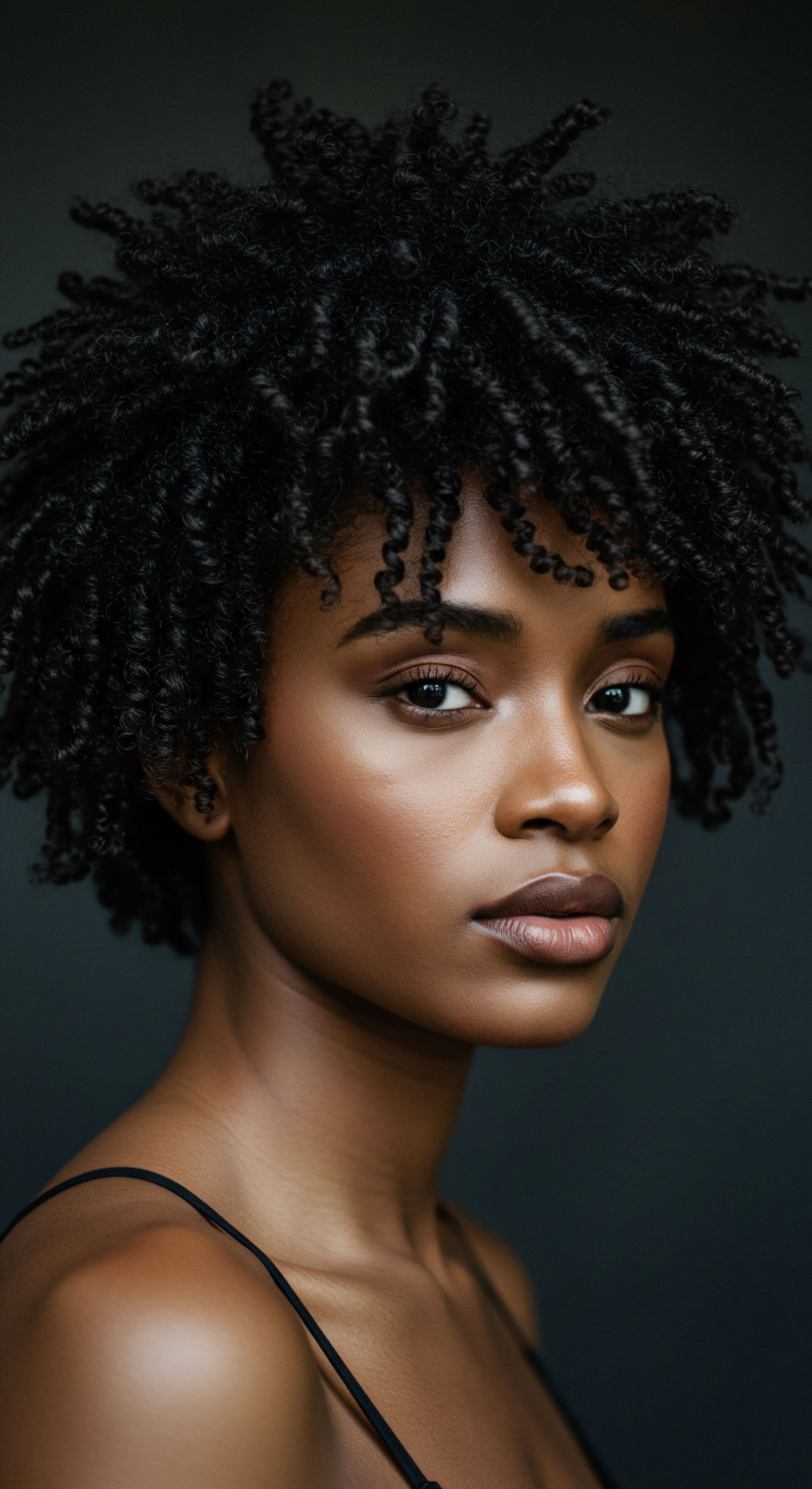
What Role Does Hair Play in Psychological Well-Being?
The intricate relationship between hair and psychological well-being cannot be overstated. Hair is a visible extension of self, and its presentation significantly impacts self-perception and confidence. A positive relationship with one’s hair can lead to enhanced self-esteem and a more positive outlook on daily interactions. Conversely, experiences of hair discrimination can lead to profound emotional distress, including internalized racism, anxiety, and chronic stress.
A study published in the journal Body Image by Marisol Perez and colleagues at Arizona State University revealed that negative experiences related to hair are normative for young Black girls, with some as young as 10 years old reporting such encounters. This early exposure to hair-based stereotyping can shape self-image and belonging throughout life. The study underscores how external perceptions of hair can lead to internal conflicts, potentially contributing to depression or low self-esteem.
The act of embracing natural hair, therefore, becomes a form of self-care and a therapeutic journey. It allows individuals to reconnect with their authentic selves and celebrate their unique beauty, fostering a sense of psychological resilience. This personal act, when multiplied across a community, becomes a collective assertion of identity and a powerful counter-narrative to prevailing biases.
| Aspect of Impact Professional Perception |
| Description and Data Point Black women's hairstyles were 2.5 times more likely to be deemed unprofessional by interviewers and colleagues. |
| Aspect of Impact Employment Opportunity |
| Description and Data Point Over 20% of Black women aged 25-34 have been sent home from their jobs due to their hair. |
| Aspect of Impact Health Implications |
| Description and Data Point Studies link chemical hair straighteners, often used to conform, to an increased risk of uterine cancer. |
| Aspect of Impact Psychological Distress |
| Description and Data Point Experiences of hair discrimination contribute to internalized racism, anxiety, and chronic stress. |
| Aspect of Impact This table highlights the tangible, research-backed consequences of hair bias, showing its reach into professional and personal well-being. |
The interplay between historical practices and modern identity is a dynamic, ongoing process. Hair, as a visible marker of heritage, continues to bear the weight of history while simultaneously serving as a vibrant expression of cultural strength and personal authenticity in the present day.

Reflection
As we consider the profound and enduring connection between historical hair practices and contemporary cultural identity, a clear understanding begins to settle. Hair is far more than mere keratin strands; it is a living chronicle, a silent orator of journeys undertaken, battles won, and traditions carefully kept. From ancient communal rituals that bound societies to modern acts of defiance against inherited biases, our hair stands as a testament to the human spirit’s capacity for adaptation, memory, and profound self-expression.
The quiet confidence found in embracing one’s natural texture, the strength drawn from ancestral forms, and the collective voice that rises in the face of discrimination—these are the powerful legacies carried in every coil and curl. The story of hair, then, is truly the story of us ❉ a vibrant, ever-unfolding narrative of identity, resilience, and the quiet, persistent beauty of being authentically oneself.

References
- Ashby, S. P. (2016). Archaeologies of Hair ❉ an introduction. Internet Archaeology, 42.
- Kuumba, M. B. & Ajanaku, F. (2006). Dreadlocks ❉ The Hair Aesthetics of Cultural Resistance and Collective Identity Formation. Mobilization ❉ An International Quarterly, 11(2), 227-243.
- Mercer, K. (1987). Black Hair/Style Politics. New Formations, 3, 33-52.
- Perez, M. et al. (2022). Negative experiences related to hair are normative for young Black girls. Body Image .
- Rosette, A. S. & Livingston, R. W. (2020). The Natural Hair Bias in Job Recruitment. Social Psychological and Personality Science .
- Synnott, A. (1987). Shame and Glory ❉ A Sociology of Hair. British Journal of Sociology, 48(3), 381-413.
- Thompson, C. (2009). Black Women and Identity ❉ Hair, Beauty, and Self-Esteem. Journal of Black Studies, 39(5), 831-849.
- TRIYBE Research and Community Dialogues. (2025). Beyond the roots ❉ exploring the link between black hair and mental health.
- Delaney, C. (1994). Untangling the Meanings of Hair in Turkish Society. Anthropological Quarterly, 67(4), 159-172.
- Dove and LinkedIn. (2023). CROWN Workplace Research Study.